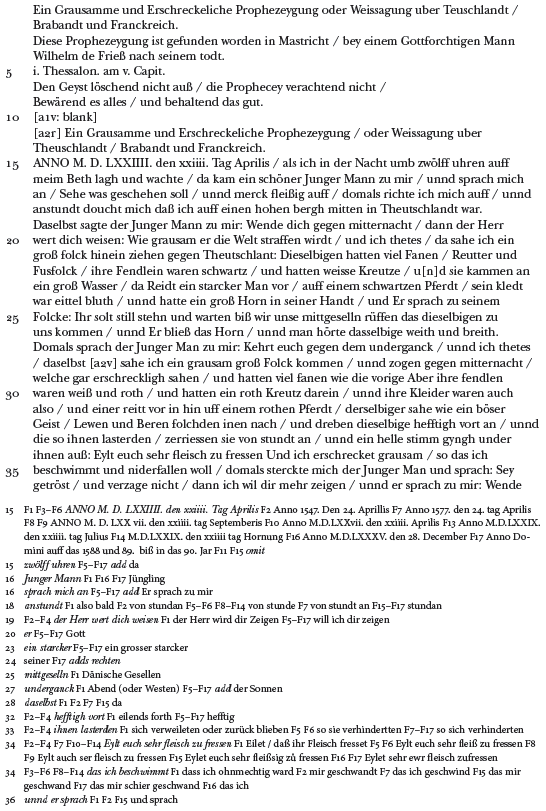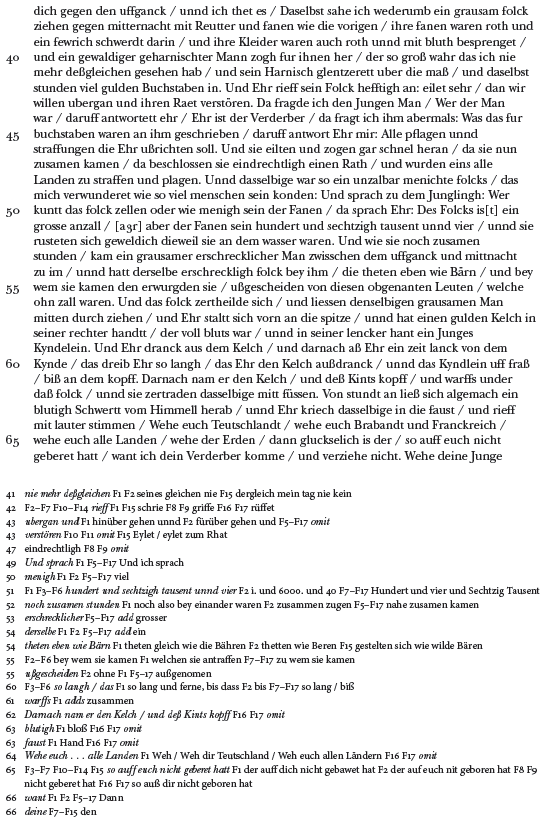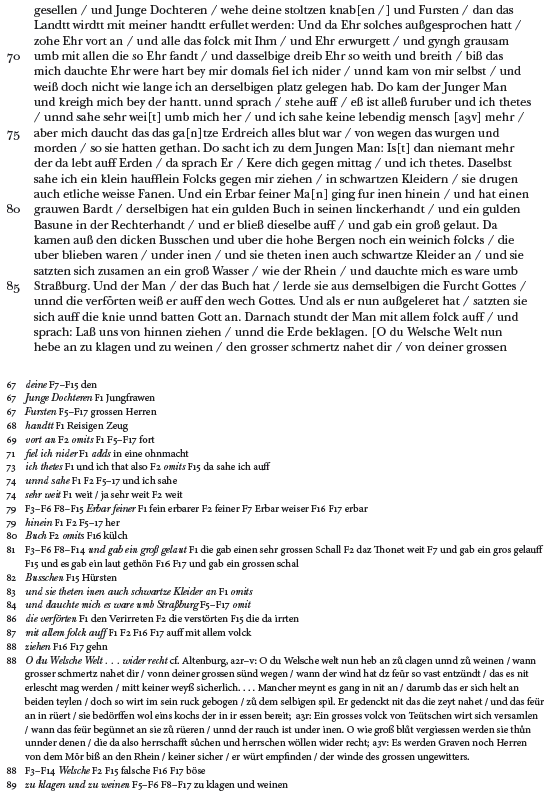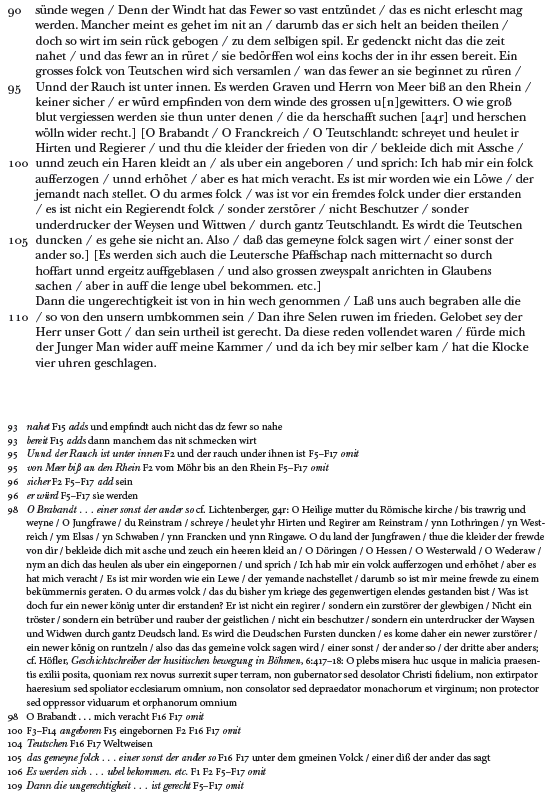APPENDIX 2
The Second Prophecy of Wilhelm Friess
For the edition of “Friess II” supplied here, I do not use F1, the 1639 edition that appears to be a descendant of the earliest version of the prophecy, as its language was significantly updated and altered in the seventeenth century. Similar reasons preclude use of F2, a seventeenth-century manuscript copy. Instead, for the base text, I use F3, the earliest printed edition (most likely to be dated to 1577), whose title page attests understanding of the original text. This edition is also the most complete, containing all the original text and all expansions. There is only one version of “Friess II,” and F1 and numerous later editions are available online, so there is no need for a parallel text.
Unless otherwise marked, the base lemma in the apparatus is drawn from F3. Most omissions are not noted. “Altenburg” denotes the “Prophecy found in Altenburg” version of “Dietrich von Zengg,” while “Lichtenberger” identifies the 1527 Wittenberg edition of Lichtenberger’s Prognosticatio.1 The additions to the original text (lines 88–108) appear in square brackets.




Following the end of the prophecy, all printed editions include additional material concerning the year 1588. The text appears in F3 as follows:
Kurtze Propheczeygung oder Weissagung von dem zu kommenden / M. D. LXXXVIII. Jahr
Dieses M. D. Lxxxviii. Jahr ist ein wunderbarlich Jahr dergleichen in Tausent Jar nicht eins gewesen ist. Der Allmechtige gütige Gott / ein Vatter aller Barmhertzigkeit / wol alle ding zum besten kehren. Denn es wirt ein grosser Cometstern gesehen werden. Daruff werden grawsame und erschreckliche / zuvorn unerhörte ding erfolgen. Darum die Alten nicht unbillich von diesem jahr / diese nachfolgende Verß gemacht haben.
Wenn man zellen wirdt 1580. und acht.
Das ist das Jahr das ich betracht.
Geht in dem die Welt nicht under.
So geschicht doch sonst mercklich groß Wunder.
In F4–F17, the last line omits the word groß, and additional material concerning 1588 follows. In F4–F7, the additional material closes with two short prophecies (omitted in F8–F17) attributed to a sybil and Birgitta of Sweden and drawn from Lichtenberger’s Prognosticatio. They appear in F4 as follows:
Sybilla.
Wir sind die / auff welche kommen ist das end der Welt / Das böse ist nahe bey dem guten. Erwölle das gute / und verwirff das böse.
Brigida.
Vertrawe auff Gott / und thu guts / bitte das alle ding zum besten kommen / Denn Gott hat allein macht alles zukunfftige ungluck gnediglich abzuwenden. Amen.